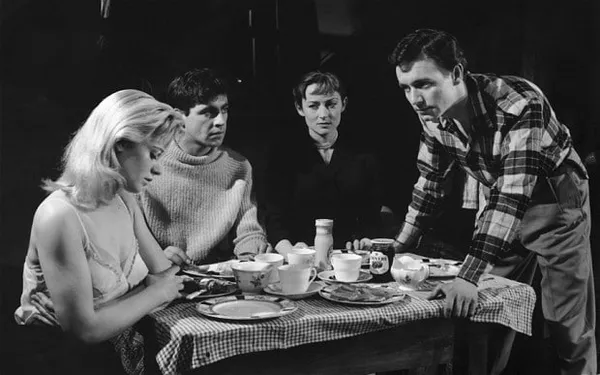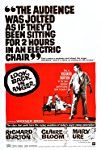Eye For Film >> Movies >> Look Back In Anger (1958) Film Review
Look Back In Anger
Reviewed by: Jennie Kermode

Writers and directors often talk about the difficulty of bringing a book to the screen. Viewers are often disappointed if the cinematic adaptation isn't exactly congruent with the novel. What tends to get less attention is the difficulty of adapting a play, with the two media far more difficult to bridge than tends to be assumed. Nigel Kneale (best known as the creator of Professor Quatermass) is the underrated element in this acclaimed British production, adapting John Osborne's famous work with considerable skill, yet there are elements of the result that still make one feel as if one is sitting in a theatre - not least the larger than life presence of Richard Burton in the lead.
A bit of scenery chewing makes sense in this particular role. It's essential that Jimmy Porter come across as a man who is similarly too large for the world he inhabits, because otherwise the viewer would struggle to sympathise with him - and that is something that has only become more challenging with time. Recent developments in feminist discourse have given a new urgency to the study of the Angry Young Man but have simultaneously made the public less patient with him. Jimmy's cruel and dismissive treatment of wife Allison (played here with studied fragility by Osborne's own wife, Mary Ure) was always intended to be seen as monstrous - indeed, Jimmy himself must face this in order to find relief - but it is likely to be viewed much more harshly by today's audiences than 1959's.

That it still works at all is largely down to Burton and the conviction with which he embodies Jimmy; for all that this is an archetypal kitchen sink drama, the magnitude of his performance and its awkward fit within the whole almost border on the surreal. Opposite him, Claire Bloom wisely relies on wit and timing rather than force of personality, keeping her strength in reserve in the role of Allison's friend Helena, the most modern and arguably the most complex of the characters. She never seems cowed by Burton, but that sense of latent power makes her seem a more dangerous opponent without turning the film into a shouting competition, and the two have strong chemistry when it's needed.
Other characters get less room to develop in this version, despite the presence of some highly capable supporting actors. It's partly a result of the decision to build in outdoor activity and additional movement to make the drama more cinematic. The outdoor scenes date the film more than anything else, which is a little unfair, as director Tony Richardson found room to be creative but was copied so much over the next few years that it's hard now to appreciate his originality. In this regard, Look Back In Anger has a lot to offer to film students but may make less of a impression on the wider public.
For all its problems, the human tension at the heart of Osborne's creation is a potent as it ever was, and it's still easy to be absorbed by the drama, whatever one thinks of the characters. Its return to cinemas is a welcome one. It still has plenty to say.
Reviewed on: 29 Mar 2018


















